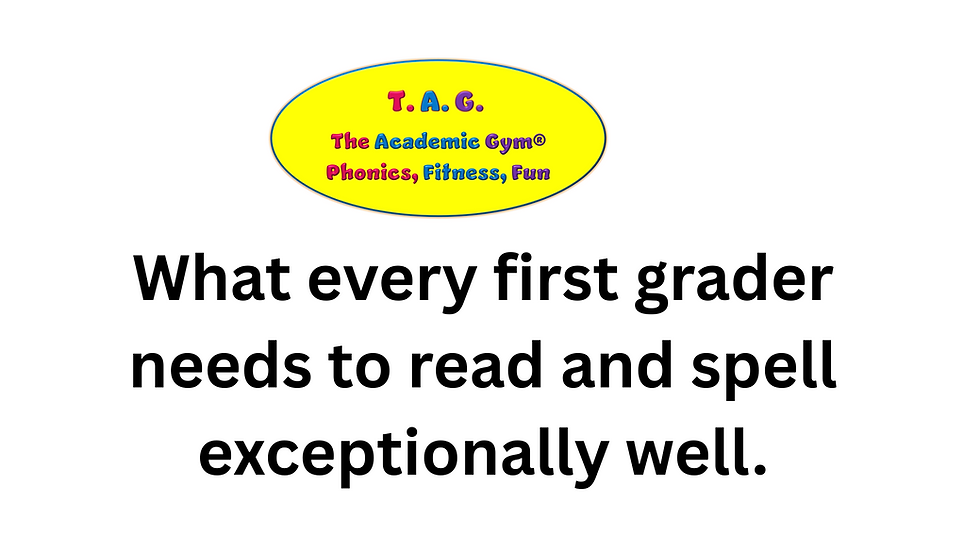First grade reading skills
- Brian Vieira
- Aug 8
- 2 min read

Unlocking the Secrets of First Grade Reading Skills and Spelling Skills: A Guide for Parents
Welcome, parents! I'm Brian Vieira, a State Certified Teacher, Science of Reading Specialist, and founder of (TAG) The Academic Gym but you can call me Coach V. With over 30 years of experience and 23 books on spelling, reading, and vocabulary under my belt, I'm here to help you equip your children with the essential skills they need to excel in reading and spelling. Let's dive into how we can blend phonics, fitness, and fun to create an effective learning environment for your kids.
First Grade Reading Skills
As your child enters or leaves first grade, it's crucial to ensure they master specific reading and spelling skills to prepare for second grade. The New York Next Generation curriculum moves rapidly, so whether your child is homeschooled or attends school away from home, being well-informed is key. And first grade reading skills are foundational.
Understanding Phonological Awareness
Phonological awareness is the ability to understand spoken words, syllables, and sounds. This includes breaking words into components like consonant blends and vowel sounds. For example, the word "brush" can be broken down into "BR" at the start, the "uh" sound in the middle, and "SH" at the end. Children should be able to count, blend, and segment single-syllable words containing consonant blends to develop this awareness.
The Importance of Syllables
English is fundamentally syllabic, meaning syllables are combinations of vowel and consonant sounds. Recognizing these syllables is crucial for reading and spelling. For instance, combinations like "ab," "eb," "ib," "ob," and "ub" form the foundation of many words. Mastery of these syllables is expected by the end of kindergarten and remains vital through first grade.
Short and Long Vowel Sounds
By first grade, children should also recognize long vowel sounds, as seen in words like "bay," "bee," "by," "bo," and "boo." The rule is that vowels at the end of syllables typically have a long sound, which is a fundamental principle for reading and spelling proficiency.
Syllable Tables: A Powerful Tool
Syllable tables are like math tables but for reading and spelling. They catalog consonants and vowel endings in various combinations, covering short and long vowel syllables, blends, and three-letter combinations like "blay," "blee," "bly," "blo," and "blu." Familiarity with these tables enables children to break down and spell thousands of English words effectively, accelerating their reading and spelling skills.
Resources and Support for Parents
To support you, I offer copies of the syllable tables and refer you to my book "The Analytical Spelling Book," available on Amazon under "ScholarSkills Sound and Say." This resource contains all the tools and syllable tables needed for effective teaching.
Feel free to contact me via email at info@theacademicgym.com or by phone at (833) 433-READ to obtain these materials and further assistance. Remember, spelling well is foundational to reading well, and mastering syllabic spelling is critical from kindergarten through later grades.
Conclusion
I invite you to subscribe for more educational content and share this information with your friends. The approach combines phonics, fitness, and fun to help children learn effectively and confidently. Let's work together to build a strong foundation in spelling, reading, and academic excellence for our children.




Comments